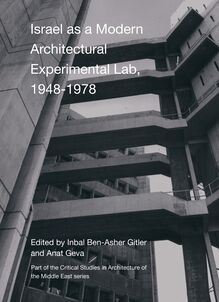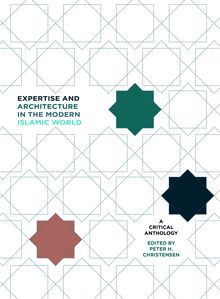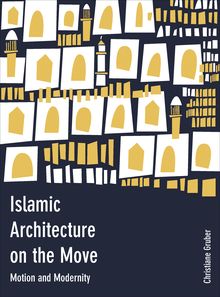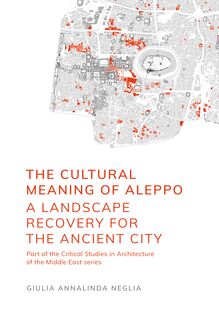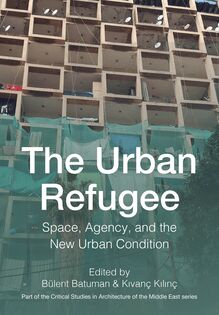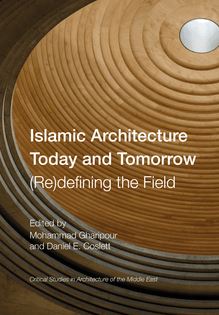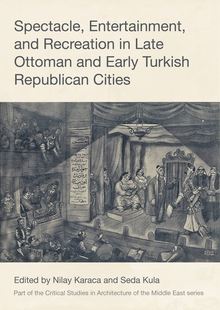-
 Univers
Univers
-
 Ebooks
Ebooks
-
 Livres audio
Livres audio
-
 Presse
Presse
-
 Podcasts
Podcasts
-
 BD
BD
-
 Documents
Documents
-
- Cours
- Révisions
- Ressources pédagogiques
- Sciences de l’éducation
- Manuels scolaires
- Langues
- Travaux de classe
- Annales de BEP
- Etudes supérieures
- Maternelle et primaire
- Fiches de lecture
- Orientation scolaire
- Méthodologie
- Corrigés de devoir
- Annales d’examens et concours
- Annales du bac
- Annales du brevet
- Rapports de stage
La lecture à portée de main
Vous pourrez modifier la taille du texte de cet ouvrage
Découvre YouScribe en t'inscrivant gratuitement
Je m'inscrisDécouvre YouScribe en t'inscrivant gratuitement
Je m'inscrisEn savoir plus
Vous pourrez modifier la taille du texte de cet ouvrage
En savoir plus

Description
The chapters in this volume, organized around the leitmotif of expertise, demonstrate the thematic importance and specific utility of in-depth and broad-ranging knowledge in shaping the understanding of architecture in the Islamic world from the nineteenth century to the present. Specific case studies include European gardeners in Ottoman courts, Polish architects in Kuwait, Israeli expertise in Iran, monument archiving in India, religious spaces in Swedish suburbs and more.
This is the latest title in Critical Studies in Architecture of the Middle East, a series devoted to the most recent scholarship concerning architecture, landscape and urban design of the Middle East and of regions shaped by diasporic communities more globally.
Introduction
Peter H. Christensen
Chapter 1: ‘I don’t want orange trees, I want something that others don’t have’: Ottoman Head-Gardeners after Mahmud II
Deniz Türker
Chapter 2: A Nineteenth Century Architectural ArchiveL Syed Ahmad Khan's Āṣar-us-Ṣanādīd
Mrinialini Rajagopalan
Chapter 3: The Balyan Family and the Linguistic Culture of a Parisian Education
Alyson Wharton
Chapter 4: Drawing Knowledge, (Re-)Constructing History: Pascal Coste in Egypt
Eva-Maria Troelenberg
Chapter 5: A Bourguibist Mural in the New Monastir? Zoubeïr Turki's Play on Knowledge, Power, and Audience Perception
Jessica Gerschultz
Chapter 6: Expertise in the Name of Diplomacy: The Israeli Plan for Rebuilding the Qazin Region, Iran
Neta Feniger and Rachel Kallus
Chapter 7: Industrial Complexes, Foreign Expertise, and the Imagining of a New Levant
Dan Handel and Alona Nitzan-Shiftan
Chapter 8: Mobilities of Architecture in the Global Cold War: From Socialist Poland to Kuwait and Back
Łukasz Stanek
Chapter 9: Form Follows Faith: Swedish Architects, Expertise, and New Religious Spaces in the Stockholm Suburbs
Jennifer Mack
Sujets
Informations
| Publié par | Intellect Books |
| Date de parution | 15 août 2018 |
| Nombre de lectures | 0 |
| EAN13 | 9781783209293 |
| Langue | English |
| Poids de l'ouvrage | 3 Mo |
Informations légales : prix de location à la page 0,3900€. Cette information est donnée uniquement à titre indicatif conformément à la législation en vigueur.
Extrait
Expertise and Architecture in the Modern Islamic World is part of the Critical Studies in Architecture of the Middle East series. The series is edited by Mohammad Gharipour (Morgan State University, Baltimore) and Christiane Gruber (University of Michigan, Ann Arbor).
Critical Studies in Architecture of the Middle East is devoted to the most recent scholarship concerning historic and contemporary architecture, landscape, and urban design of the Middle East and of regions shaped by diasporic communities more globally. The series invites interdisciplinary studies from diverse perspectives that address the visual characteristics of the built environment, ranging from architectural case studies to urban analysis.
First published in the UK in 2018 by
Intellect, The Mill, Parnall Road, Fishponds, Bristol, BS16 3JG, UK
First published in the USA in 2018 by
Intellect, The University of Chicago Press, 1427 E. 60th Street,
Chicago, IL 60637, USA
Copyright © 2018 Intellect Ltd
All rights reserved. No part of this publication may be reproduced, stored in a retrieval system, or transmitted, in any form or by any means, electronic, mechanical, photocopying, recording, or otherwise, without written permission.
A catalogue record for this book is available from the British Library.
Series: Critical Studies in Architecture of the Middle East
Series ISSN: 2059-3562
Contents editor: Kıvanç Kılınç
Copy editor: MPS Technologies
Cover designer: Holly Rose
Production manager: Katie Evans
Typesetting: Contentra Technologies
Print ISBN: 978-1-78320-928-6
ePDF ISBN: 978-1-78320-930-9
ePUB ISBN: 978-1-78320-929-3
Printed and bound by Gomer, UK
This is a peer-reviewed publication.
Contents
Acknowledgements
Introduction
Peter H. Christensen
Chapter 1: ‘I don’t want orange trees, I want something that others don’t have’: Ottoman Head-Gardeners after Mahmud II
Deniz Türker
Chapter 2: A Nineteenth-Century Architectural Archive: Syed Ahmad Khan’s Āṣār-us-Ṣanādīd
Mrinalini Rajagopalan
Chapter 3: The Balyan Family and the Linguistic Culture of a Parisian Education
Alyson Wharton
Chapter 4: Drawing Knowledge, (Re-)Constructing History: Pascal Coste in Egypt
Eva-Maria Troelenberg
Chapter 5: A Bourguibist Mural in the New Monastir? Zoubeïr Turki’s Play on Knowledge, Power, and Audience Perception
Jessica Gerschultz
Chapter 6: Expertise in the Name of Diplomacy: The Israeli Plan for Rebuilding the Qazvin Region, Iran
Neta Feniger and Rachel Kallus
Chapter 7: Industrial Complexes, Foreign Expertise, and the Imagining of a New Levant
Dan Handel and Alona Nitzan-Shiftan
Chapter 8: Mobilities of Architecture in the Global Cold War: From Socialist Poland to Kuwait and Back
Łukasz Stanek
Chapter 9: Form Follows Faith: Swedish Architects, Expertise, and New Religious Spaces in the Stockholm Suburbs
Jennifer Mack
Notes on Contributors
Index
Acknowledgements
Several of the essays in this volume were first published in the International Journal of Islamic Architecture (IJIA), volume 4.2 (2015). The contributors and I wish to thank Kıvanç Kılınç for his editorial insight and advice during the preparation of that issue. I am grateful to Mohammad Gharipour and Christiane Gruber for their invitation to produce this expanded volume. Yasser Tabbaa provided thoughtful criticisms on the Introduction. Katie Evans at Intellect proved invaluable in the production of all aspects of this expanded volume. Additionally, I am grateful to the Department of Art and Art History at the University of Rochester for supporting the costs associated with indexing this volume. Finally, I thank the contributors for their rigorous and original contributions.
Peter H. Christensen Editor
Introduction
Peter H. Christensen
Islamic Architecture after 1800
Paradigmatic turns in the study of culture are a constant, and the field of Islamic architecture is no exception. A panorama of literature and conferences on the topic from the last decade suggests that we have been in a turn toward historiography and that this period of self-reflection is gradually ending. This historiographic turn has grown in steady proportion to a cross-cultural turn, the latter of which continues to grow. Such turns proffer the double-edged spectre of elemental change to the way in which history is written and the more fleeting trends of fashion.
Yet despite the paradigmatic shifts, some structural concepts persist, and the notion that the intrinsic meaning of architecture in the Islamic world decreased with the advent of European imperialism and colonialism lingers in much of the literature today, even when this notion has been challenged by several scholars, such as Esra Akcan, Sibel Bozdoğan, Zeynep Çelik, and Yasser Elsheshtawy, among others. 1 The imperial and colonial eras were not mere harbingers of erosion, ridding the arts of Islam of their supposed purity and clarity, but were also times of immense synthesis, with the roles of actors in the construction of the built environment, both internal and external to the religious sphere of Islam, changing in dynamic ways. This volume shines a spotlight on these dynamics through new research, bringing historiographic critique together with primary research.
It is easy to understand why the cross-cultural literature has tacitly favoured the periods prior to European imperialism. An environment devoid of vastly imbalanced external political pressure, the erosion of state sovereignty, and couched within the distance of pre-modern space carries with it ‘pure’ forms of interactional dynamics, equanimity, affinity, and agency as opposed to the sealed and sullying processes of hegemony, subjugation, and force. This edited collection asserts that this contrast of context, and the periodization which results from it, is artificial and neglects the continuous nature of time and the constancy of change; and it serves to remind us how important the inclusion of the nineteenth, twentieth, and twenty-first centuries is to the study of Islamic architecture in its broadest sense.
The chapters in this volume, organized around the specific leitmotif of expertise, demonstrate the thematic importance and specific utility of expertise in the processes that have shaped the construction and form of architecture in the Islamic world from c. 1800, where many traditional histories of Islamic architecture end, to the present. The embedded nature of expertise in all issues related to the creation of architecture is salient, too, because it allows the scholarship built around the topic to eschew present and future turns and instead to give expertise the inherent role it deserves as an important lens of analysis in the field.
Architecture, Transmutation, Technicalism
Nasser Rabbat has described the erosion of the arts of Islam as an acceptance of ‘incongruity’ between Islamic architecture and modernism hinged around a moment when modernism eclipsed Islamic architecture and ‘took its place’. ‘Consequently,’ he argues, ‘the architecture built under colonialism and after independence was not considered “Islamic”; it was seen as either modern or culturally hybrid. Studying it was thus the domain of the modernist or the area specialist.’ 2
Modernists and area specialists have typically had few instances to come together at the same table and this is why looking to global history, and particularly its early seminal texts, is useful. Marshall Hodgson’s historical portrayal of this Modernist shift centres on the concept of transmutation, which has a number of morphological implications for the study of architecture. Hodgson introduces the concept of transmutation in his exegesis on the ‘Generation of 1789’, where he defines the ways in which specific economic, social, and intellectual transformations in the Occident fractured the Afro-Eurasian ecumenical world and subsequently facilitated a European hegemony in the nineteenth century. 3 He supplants heroic and local accounts of early modern and Enlightenment era transformation by placing a unique European metamorphosis into a global historical framework that focuses on process rather than product, and mechanics rather than a preordained notion of progress.
As actors, not victors, nineteenth-century Occidentals shifted their allegiances from ‘custom and continuity’ to ‘calculation and innovation’, in ways which were more tactical than strategic. Having supposedly manifested its ‘greatest’ florescence prior to Europe’s, Islamic culture had already established institutions of ‘independent calculation’ and ‘personal initiative’ and had tactically acclimated its cultural production to accommodate religion. The transmutation, as such, was less a transformation of life than of what Hodgson terms ‘technicalism’, 4 broadly defined as the primacy of specialized technical considerations over all others. It was this transformation, not religion or culture per se, which facilitated ascendancy and European hegemony, with unique and discrete effects: 5
In that special form [of technicalism] […] the shift went to unprecedented lengths, so that the results set new conditions for all historical life. It was not that the human mind as such was suddenly emancipated, as if by some mutation, and could therefore begin freely to explore all calculable possibilities where, before, new paths could be opened only by chance and despite the weight of customary bias. Rather, concrete new sorts of opportunity for social investment, hitherto impractical even for the most emancipated mind, became practicable, attracting even minds that still, by and large, resisted any deviation from intellectual habit. And then the resistance was gradually reduced. 6
The transmutation and this gradual reduction of resistance to change were global and dependent on the world at large for their actualization. Technicalism trumped the boundaries and challenges posed by artificial limits like state borders, language barriers, and ‘hard t
-
 Univers
Univers
-
 Ebooks
Ebooks
-
 Livres audio
Livres audio
-
 Presse
Presse
-
 Podcasts
Podcasts
-
 BD
BD
-
 Documents
Documents
-
Jeunesse
-
Littérature
-
Ressources professionnelles
-
Santé et bien-être
-
Savoirs
-
Education
-
Loisirs et hobbies
-
Art, musique et cinéma
-
Actualité et débat de société
-
Jeunesse
-
Littérature
-
Ressources professionnelles
-
Santé et bien-être
-
Savoirs
-
Education
-
Loisirs et hobbies
-
Art, musique et cinéma
-
Actualité et débat de société
-
Actualités
-
Lifestyle
-
Presse jeunesse
-
Presse professionnelle
-
Pratique
-
Presse sportive
-
Presse internationale
-
Culture & Médias
-
Action et Aventures
-
Science-fiction et Fantasy
-
Société
-
Jeunesse
-
Littérature
-
Ressources professionnelles
-
Santé et bien-être
-
Savoirs
-
Education
-
Loisirs et hobbies
-
Art, musique et cinéma
-
Actualité et débat de société
- Cours
- Révisions
- Ressources pédagogiques
- Sciences de l’éducation
- Manuels scolaires
- Langues
- Travaux de classe
- Annales de BEP
- Etudes supérieures
- Maternelle et primaire
- Fiches de lecture
- Orientation scolaire
- Méthodologie
- Corrigés de devoir
- Annales d’examens et concours
- Annales du bac
- Annales du brevet
- Rapports de stage
